Review By Robert Gulley, K4PKM
This is my first experience with an XHDATA radio, and my initial impressions are quite positive. This weather radio has an impressive set of features and appears to be built quite solidly. I say “appears” because I have not done (nor intend to intentionally do) a drop test! But my sense of the radio is that it can withstand some knocking about while still functioning (but please do not test this theory! YMMV!).
From the manufacturer’s site, here is a listing of features:
Features & Specifications:
FM: 64-108 MHz / 76-108 MHz (Stereo at Earphone Out)
87-108 MHz / 87.5-108 MHz
MW:522-1620khZ (9K Steps) / 520-1710 KHz (10K Steps)
SW: 1711-29999 KHz (5K Steps)
ATS Scanning with Auto Save
NOAA Weather Band with Scanning Alert Mode
VF/VM Tuning Modes
Bluetooth Playback & Calling
Memories: 100 AM – 100 FM – 300 SW (Add Automatically or Manually)
Clock with Alarm & Sleep Timer
TF Card Playback (Supports Up To 32 Gb Card)/Prev/Next Track/Loop & Fast Scan Modes
Flashlight with 3 Brightness levels
Flip Up Lighting Panel with 3 Brightness Levels
Earphone Jack 16 – 32 ohms (Stereo)
SOS Alarm Button
Enhanced Audio with Ported Enclosure
Lock Mode
Battery: Li-ion 18650 3000 mAh (Charges via USB C Port, Crank, Solar Panel)
Low Battery/Charge Indicators
USB Output for charging Cell Phones
Reset Button
Dimensions: (Approx) 6” W x 3” H x 1 ¾” D
Let me start with the items that impressed me.
- Weight. This is not a typical light-weight radio. It feels solid, has some bulk to it, and I like the feel. It weighs in at 11.5 ounces, which is comparable to the two other solar powered weather radios I own, which come in at 12 and 12.25 ounces respectively.
- This radio has both a torch and an LED panel, each with 3 levels of brightness. While you will not light up a room with either, they are both quite sufficient for their intended purposes. The LED is particularly useful to light up the immediate area around the radio, and on it’s brightest level puts out a good amount of light. Being LEDs, the power drain is very reasonable.
- The radio is powered by multiple sources of course, as is typical with today’s weather radios, but a unique feature compared to my other radios is an articulating solar cell (and LED) panel. This allows you to follow the sun for quite a while as it rotates in the sky.
- The antenna, while not very long, is very solid and should last a long time if not subject to abuse (and looks to be easily replaceable if something does happen).
- The battery is easily accessible and replaceable with the now-common 18650 rechargeable battery. (As an aside, for those who, like me, prefer to charge batteries outside a radio when possible, there are charging units available from the usual sources if you want to minimize heat and charging wear-and-tear on your radios and flashlights.)
- The ATS function works quite fast on FM, finding 21 stations in my very rural area just off the built-in whip antenna
- Keypad layout is minimal and functional. For those wanting a direct-entry frequency keypad, this radio is not so equipped. However, running through the memory channels is easily done, without multiple menu hoops through which to jump.
- Tuning is both a blessing and a curse (see cons below for the negatives) – the tuning can be accomplished at two different speeds, allowing for a slow tune and a bigger jump depending on how fast you turn the tuning dial. This can be particularly useful with SW, but also when manually scanning the MW band or when finding tracks on a memory card.
- The crank can be extended as a stand at a few different angles. I am not sure if this was intended, but it works nicely!
- When in SW mode, the band is displayed as you tune (i.e. 41mb, 25 mb, etc.)
Less impressive (but see conclusions):
- Tuning can be slightly erratic, making bigger jumps at times than intended. This can happen in slow mode (one click of the tuning wheel at a time), or it can happen when the tuner switches between slow and fast mode and you didn’t think you were turning it fast enough for the switch. On the plus side, there is one arrow displayed when tuning in slow mode, and two arrows when in fast mode, so it is easy to see when it has switched modes.
- There are rubber strips glued into slots on the bottom of the radio to give it a little more resistance to sliding, but I feel it makes the radio slight more unstable – you may disagree since the effect is minimal.
- Soft muting when tuning – I know this is a biggie for many folks, so I mention it (again, see conclusions)
- No SSB (not that I expected it).
- Three NOAA stations come in for me which is typical, but I do have weather radios which can receive 4 well enough to copy, so not quite as sensitive. However, two or more is adequate to catch weather forecasts for your area in case your closest station is down for some reason
- ATS on SW and MW was not impressive – perhaps moving too quickly? Many stations come in with good audio, but the scan did not find them. Again, YMMV.
Conclusions
I find this to be a good radio for its intended purpose – a Weather Alert radio with solar, lights, and multiple charging power options for operating, and an option for charging small devices if needed. This is not, nor should it be compared to, stand-alone shortwave radios. This is a bonus, and it works well for AM shortwave stations. That it does not have SSB is not an issue for me – I have plenty of radio options to enjoy during a power outage which are capable of SSB upper and lower sidebands.
The soft muting will no doubt bother some, but again, this is is primarily a weather and emergency radio, not a radio designed for pleasurable shortwave listening. As for the audio itself, the speaker produces a good clean sound, and there is even a type of bass boost which helps the audio even more. AM, FM, and SW stations sound good, and I find the audio to be quite strong out of this compact unit.
A replaceable/removable battery is a real plus for me both in terms of charging and for popping in a fresh battery while charging a drained battery. I like having backups for my backups, so this is right down my alley.
The unit is a good size, compact but solid, and has all the useful controls easily reached/manipulated. The antenna is solid, the LED lights are a nice touch, and it is a radio I believe could be counted on when needed. (Oh, and it is reasonably priced as well!)
As always, these are my personal, honest opinions. While the XHDATA folks approached me for the review and sent a unit to me free of charge, I always call it as I see it, good or bad. I happen to think this radio is a keeper!
Cheers! Robert Gulley (All photos by the Author)
Click here to check out the XHDATA D-608WB on Amazon.com
(note: this is an affiliate link that supports the SWLing Post at no cost to you. Thank you!)

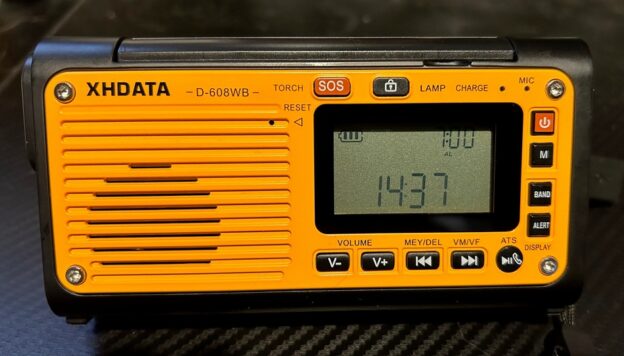
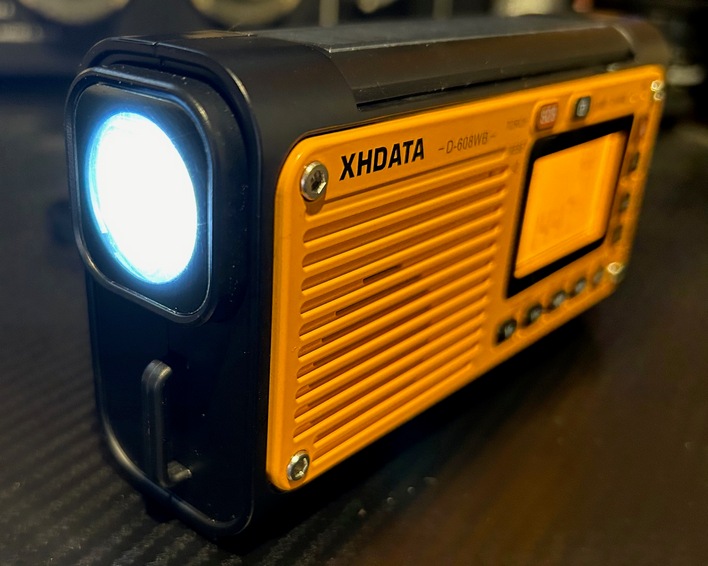
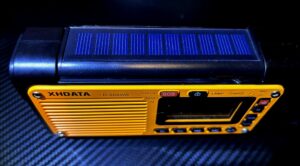
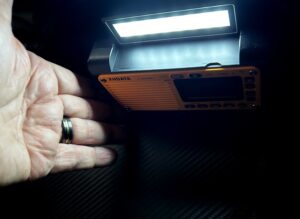
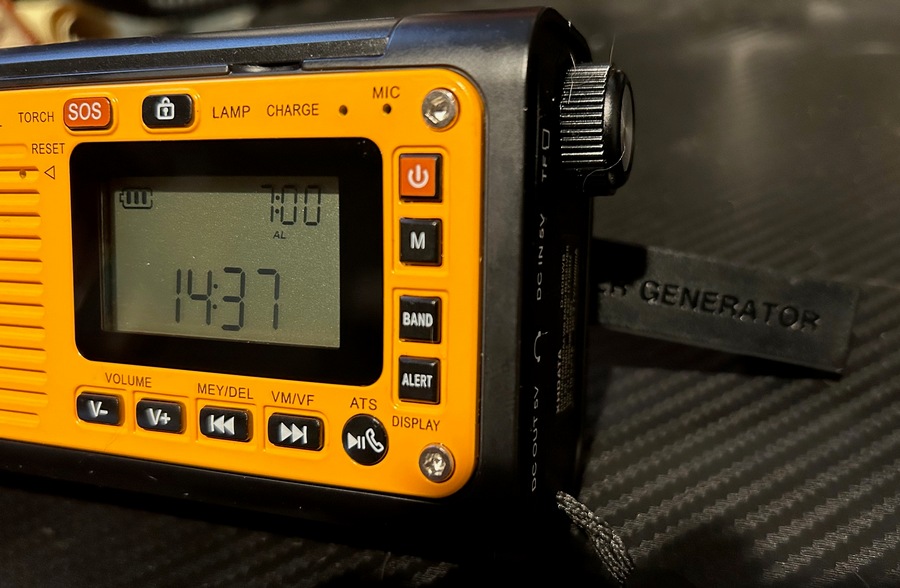
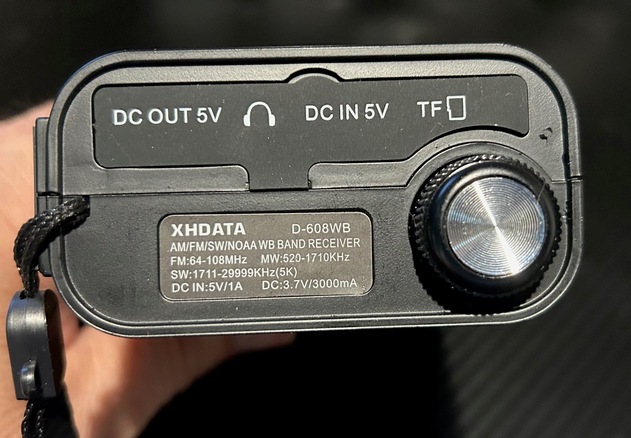
As is well known the cell phone base stations and the terrestrial internet failures in the area of an emergency is common.
I am not a fan of using a dedicated series of transmitters for emergencies because they are poor value for money, need maintenance and for the general public if they are in a separate band ie Weather Radio not in every location where the potential victims are. What percentage of vehicles have weather radio?
A much better approach is to use existing broadcast infrastructure. Most of the equipment is in use most of the time, so there is pressure to keep it that way. Broadcast is better because it can be far enough away to not be affected by the emergency’s fury.
The way to do this is to use digital radio where some of the data capability is used for emergency warnings. This already operating over most of India and in other parts of asia using Digital Radio Mondiale. When an emergency alert is triggered, the radio wakes up selects the alert data stream, increases the radio volume, and makes an announcement. They can be repetitively transmitted until a code cancels the alert. In addition coloured maps of weather systems and blocked roads can be displayed along with detailed instructions. This system is indexed so you can cover multiple emergencies. It can also transmit the location of Police authorised road blocks to vehicle navigation systems. Lastly there is a conditional access mode, like Sel Call on two way radios so individual or groups of vehicle crews out of radio range can be issued commands like ‘evacuate now’. This is also possible in DAB+ which is used in Europe and Australia.
“Operating over most of India and in other parts of Asia” means that there’s a transmitter network operating in India and some tests in China and North Korea. Do you know whether they actually use any of emergency warning features of DRM?
I was glad to have my C.Crane Skywave SSB 2 on June 5th when we had an EF-1 tornado touch down in central Maryland causing moderate damage. The alert went off continually for three or four hours as the storms moved through and warnings changed. The concept is great. Timing was up-to-the-minute. However, I only wish NOAA was a tad more in tune with the general public and progress in technology.
1. Content is heavily geared to marine conditions. Isn’t there a VHF marine channel for this?
2. Verbiage is sometimes couched in meteorological jargon.
3. Synthesized voice is stilted and mispronounces certain local names.
4. The local transmitter in Pikesville has had periods of distorted transmission or totally off on occasions.
Thanks for the detailed review. I just snagged one on Amazon, who have a $5 coupon at the moment at my location (SE US), lowering the price to $34.95, which seems reasonable, since I recently paid over half that much for an 18650 battery alone. It should be useful in the tornado alley where I live. It seems to have an amazing array of features and will replace an ancient one which is so cranky that I sometimes forget how to operate it between tornados.
Hi Douglas
Glad you were able to use a coupon! I do think it is pretty simple to operate, which is a real plus when things are about the hit the fan!
Cheers! Robert
Nice review, Robert! I’m a big fan of “emergency” radios. Sounds like a solid unit for when the fertilizer hits the fan.
Cheers, Jock
Thanks Jock –
Living in an area where storms seem to hit pretty regularly, I am a fan of them as well. Plus, I’m an old-timer now I guess, but the move away from radio signals for all kinds of information just seems short-sighted. (Wasn’t long ago major cell systems went down in large parts of the U.S. – fortunately I wasn’t affected, but easily could have been, and poof! – there goes not only my phone, but also my Internet!) Oh well.
Cheers, Robert
Robert,
I agree: redundant tools for gathering information in an emergency is a good thing.
After the North Ridge earthquake, a California Fire Captain pointed that out after the communications frustrations they suffered then.
Cheers, Jock